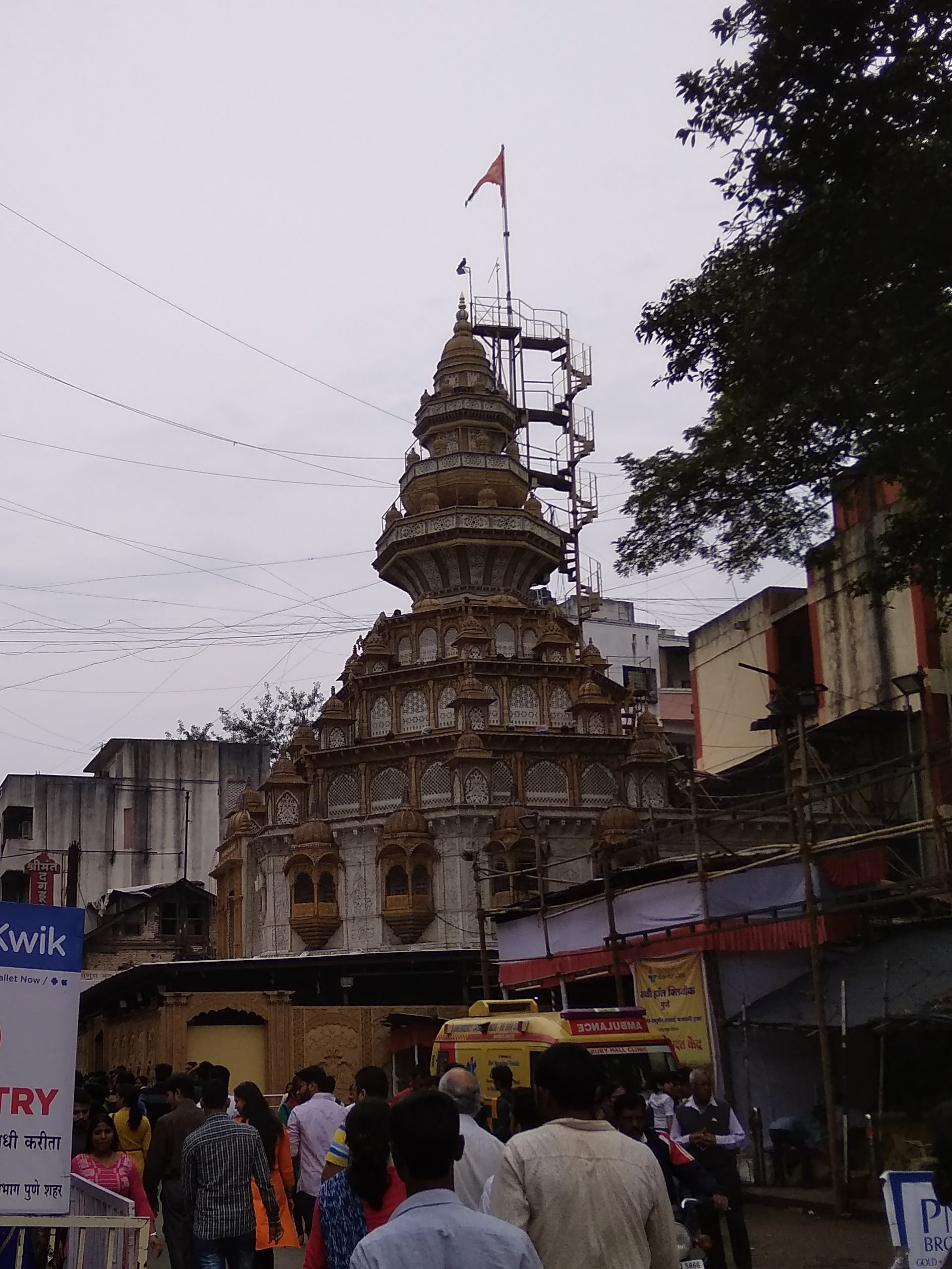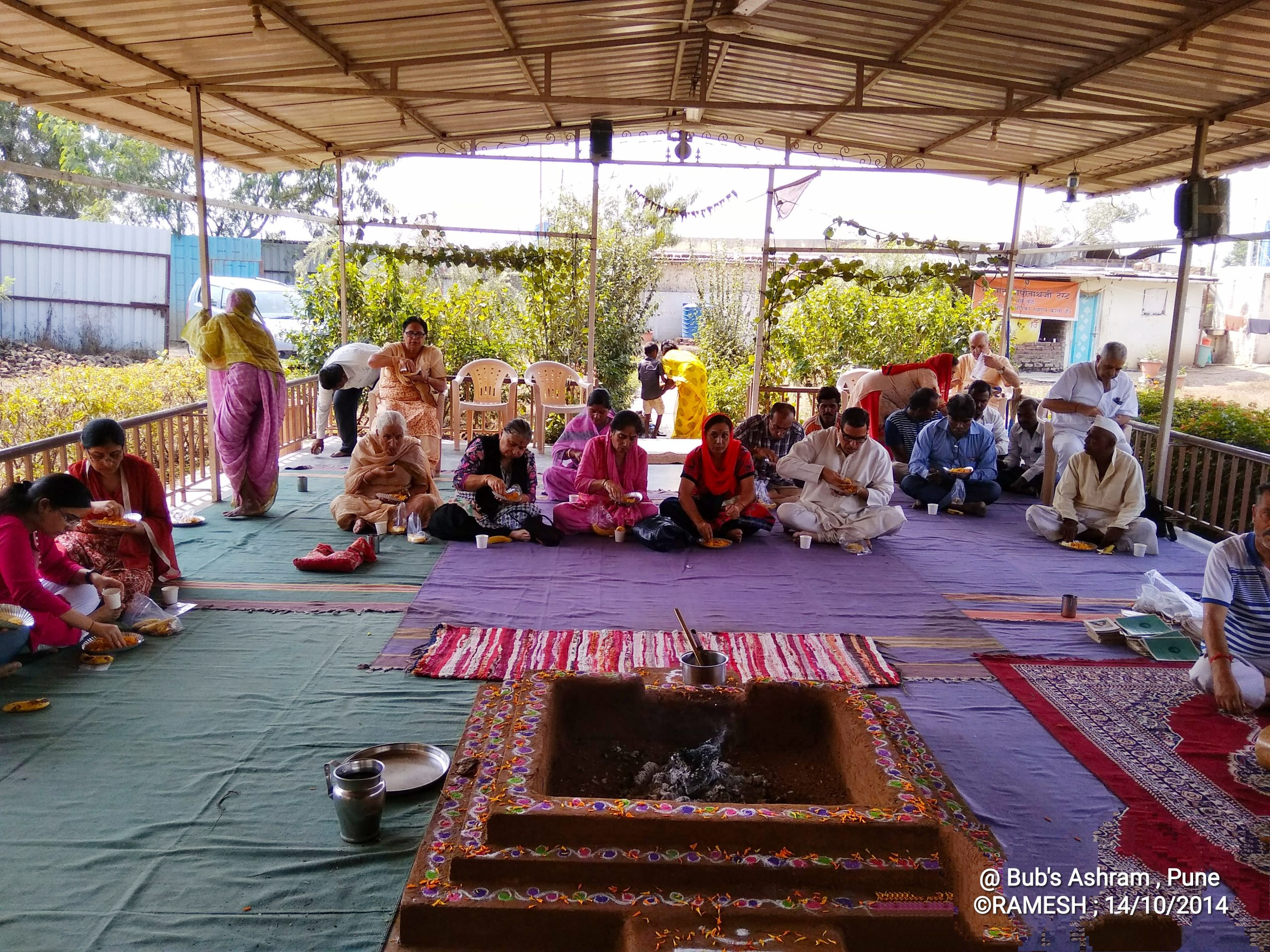Following the forced exile in 1989/’90 from their place of origin, Kashmiri Pandits have taken shelter in various cities within the country and even some abroad as well depending upon individual circumstances thrust upon them by the havoc of times. The dispersal is resulting in gradual dilution of their way of life; their very identity is at stake. Having been subjected to genocide repeatedly over the last seven hundred years, the original inhabitants of the Kashyap’s land have, now, sadly been reduced to a ‘reverse minority’. With radical Islamists continuing to rule the roost in Kashmir valley, the Pandits remain clueless as to when they can return to their roots – nourished by the sacred soil of Satisar and blessings of Ma Sharada-from times immemorial.
Among the places in the country, that have provided shelter to the exiled community, is the city of Pune in western state of Maharashtra – the land of Shivaji, the great Maratha warrior and patron of sacred Sanskrit language. From being referred to as Punya-Vishaya (10th century) to Punawadi (13th century) to Poona in 19th century and now Pune, the city has been the seat of Peshwas of the great Maratha Empire in 18th century. It is the second largest city in Maharashtra after Mumbai. The name of Bal Thackeray instantly comes to one’s mind; for this great patriotic leader of the country helped open the portals of technical educational, from this very state, for the Kashmiri Hindu community following their forced exile.
Pune, the “cultural capital” of Maharashtra is known as “Oxford of the East” for being home to number of well-known educational institution in the country. Now an Information Technology hub and known for its manufacturing, automobile industries, along with its twin Pimpri-Chinchward as well as the three cantonment towns, including Khadki and Dehu Road, Pune forms the urban core of PMR (Pune Metropolitan Region). The city is home to many events of historical importance related to freedom movement of the country as well.
Shahaji Bhosale, the Maratha general who served the Deccan Sultanates, shifted his wife Jijabai and infant son Shivaji from Shivneri to manage his Jagir of Pune in the year 1630. After their arrival, Dadoji Konddeo, the administrator of their Jagir and teacher of Shivaji, reported to Jijabai about the finding of an idol of Ganapati in the city. Considering this as an auspicious omen, she promptly decided to build a temple near their residence. Known as Kasba Ganapati Temple, it is considered as ‘gramadevata’ of Pune. And, ever since the commissioning of this temple, Pune is also known as “the city of Ganesh”.
Among many institutions / places of socio-cultural-historical-religious importance in the city is another temple dedicated to Lord Ganapati – famously known as Shreemant Dagdusheth Ganapati. The temple was constructed by a rich Lingayat trader and sweet maker Dagdusheth Gadve ‘Halwai’ and his wife Lakshmibai in memory of their only son, on the advice of their spiritual Guru, Shri Madhvanath Maharaj in late 19th century. Visited by thousands of pilgrims, including celebrities and politicians from the state, especially during the ten-day long Ganeshotsav festival every year, the historical importance of the temple is relatively lesser known to outside world.
A younger maternal cousin (who is trying to pick up the threads of exile in faraway continent of Australia, after his education in Pune) suggested to this writer, an Internally Displaced Person from Kashmir, to visit Dagdusheth Ganpati Temple in Budhwar Peth during a recent brief family trip to Pune.
When this writer visited the temple during the busy Ganeshotsav festival this year, the main idol of Ganesha was placed in the nearby makeshift Pandaal for public Darshan as has been the practice. Huge rush of early morning devotees / pilgrims eagerly waited patiently in deep veneration , in half a kilometre long multiple parallel queues to seek blessings of the Lord. The idol of wish fulfilling Ganapati, 1 meter wide and 2.2 meters tall, is adorned with more than 40 kilograms of gold ornaments. Unlike other idols, the trunk of the supreme Lord is curved. The main temple also remains open as usual. 125th year of glorious existence of Dagdusheth Ganpati Pune Temple was celebrated last year in 2017.
Getting deeply impressed by the dedication of his contemporary friend Dagdusheth, it is here that veteran freedom fighter and social reformer, Bal Gangadhar Tilak got inspired and was instrumental in revival, in the year 1893, of the great Ganapati festival. The popular ten-day long public festival, dedicated to the birth of Lord Ganesha, has taken deep roots in the country’s (especially in Maharashtra) socio-economic-cultural landscape. Though the antiquity of the festival is not clear, the festival is supposed to have become “a major social and public event” following the patronisation of Chatrapati Shivaji Maharaj, the founder of Maratha Empire in 17th Century. During, the regime of Peshwas, Shaniwarwada in Pune “witnessed grand celebrations for Lord Ganesh”.
However, the festival became a private family affair in Maharashtra following the withdrawal of state patronage after start of British Raj in India in the year 1858 (after the Indian Rebellion of 1857 that marked the end of East India Company rule in India). The empire passed a number of ordinances banning public assembly (of more than twenty persons) for social and political purposes. But, under pressure from Muslim community, the ban exempted religious assembly for Friday mosque prayers. Leveraging this exemption, Tilak thought of making Ganesh Chaturthi festival a means of “circumventing the British colonial law”. And “he was the first to install large public images of Ganesha in pavilions in Bombay Presidency and other celebratory events at the festival”.
An eyewitness account of Professor Anglo de Gubernatis, an Italian Sanskrit scholar suggests the “festival was in vogue as a public and private celebration in Mumbai (then called Bombay) in 1885”. Some believe, the festival became a public event, once again, when one Bhausaheb Rangare installed the first Ganesha idol in public in Pune in 1892. Tilak “praised the celebration of sarvajanik Ganesha utsav in his newspaper, Kesari”. And, later in 1893, starting from his own house Kesar Wada, being a known public figure, Tilak “helped expand Ganesh Chaturthi festival into a mass community event and a hidden means for political activism, intellectual discourse, poetry recitals, plays, concerts, and folk dances”. Recognising Ganesha’s appeal as “the god for everybody” that bridged “the gap between Brahmins and non-Brahmins”, Tilak’s initiative helped build “a grassroots unity across them to oppose British colonial rule”.
As the festival regained momentum, Dagdusheth Ganapati too has gained more and more veneration and recognition. The temple is considered amongst the richest in Maharashtra. Many functions are celebrated here during any calendar year. That also includes the unique mango-festival organised on the eve of Akshaya Tritiya. On this occasion, Alphonso mangoes – the best quality of the ‘King of fruits’, sourced from Ratnagiri district, are placed at the lotus feet of the Vighnaharta. Pune’s leading merchants of the fruit, Desai Bandhu, “offer a whopping 11000 mango fruits as ‘naivedya’ to Shri Ganapati”. The fruit is then distributed, next day, among the visiting devotees and the patients of some hospitals.
‘Shreemant Dagdusheth Halwai Sarvajanik Ganapati Trust’ manages round the year activities including many philanthropic initiatives. Providing financial and educational support to deprived children, rehabilitations of brick-kiln workers, running of ‘Pitashree’ for elderly persons, ambulance services, micro financing, running of food facility at city’s Sassoon General Hospital and patronising of arts, literature and music etc., are part of Trust’s declared activities.
Back in Kashmir, the most popular and ancient abode of the Lord is at Ganpatyar, in Srinagar on the banks of holy river Vitasta – an incarnation of Ma Shailputri. And, only some walking distance away in Malyaar is the abode of Bub – Bhagwaan Gopinath Ji – a well-known saint of the valley. Well, how could Bub remain confined to the valley when his devotees and admires have got forcibly displaced. For the protection of the community in exile, Bhagwaan Ji has manifested himself at many places in the country including here in Pune as well. An ashram is being set up by a team of dedicated Kashmiri Pandits, some kilometres away from Dagdusheth Halwai Ganapati, at Nande, Balewadi Road.
Both Ganapati , the “political obstacle remover”, and Bub are there to protect all, including the Pandit victims of genocide from Kashmir, as always. At the same time, community needs to strive harder to face the challenges of being in exile, yet again (seventh time in the recorded history), whether in Pune or elsewhere. Yes, We Can !
_____________________________________








